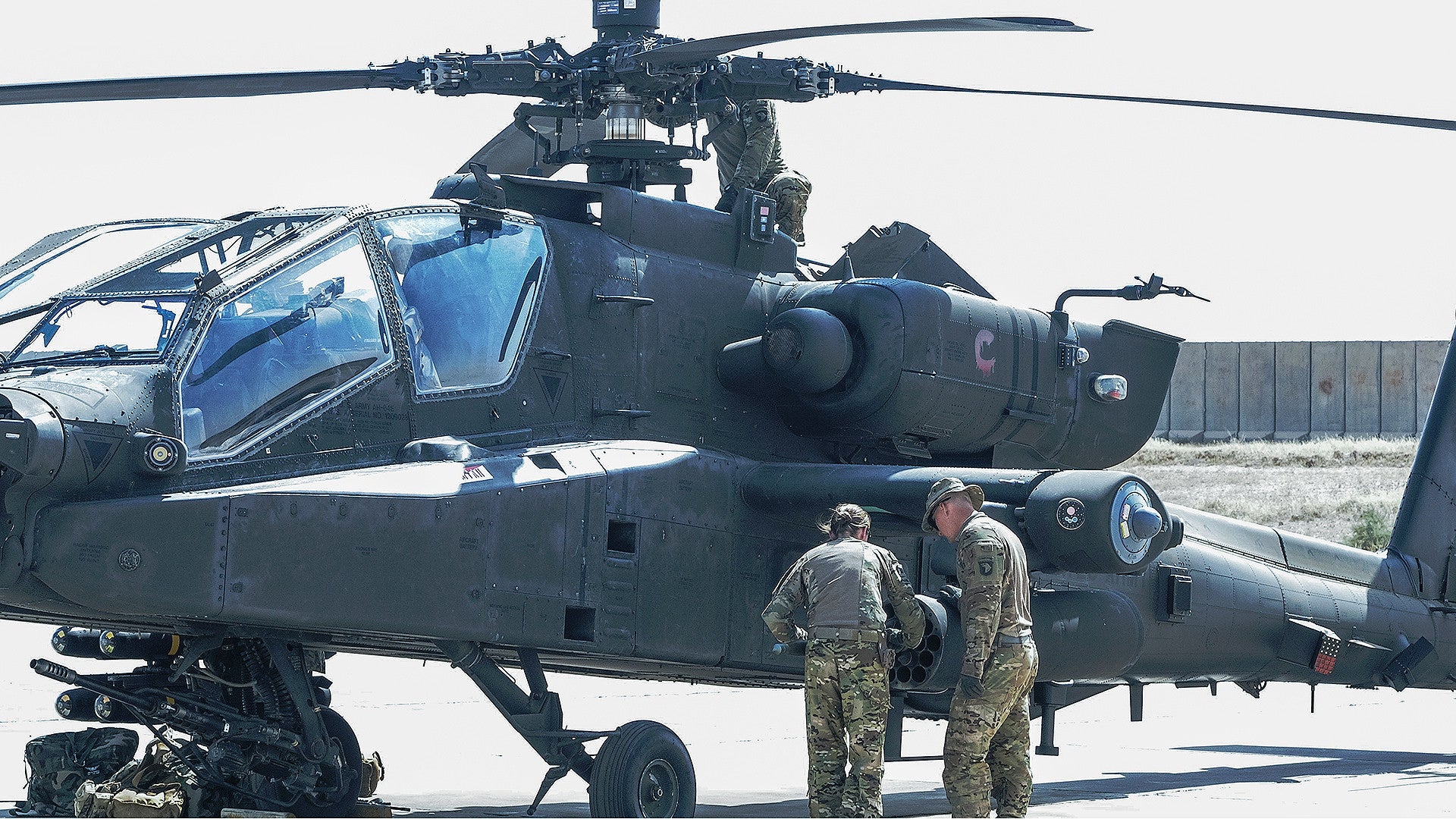The U.S. Army has begun fitting new directional infrared countermeasures to its AH-64E Apaches, giving the gunships added protection against heat-seeking missiles. Now, a review of the effort from the Pentagon’s central testing office reveals those systems do not always work properly. In addition, plans to add the same capability to variants of the UH-60 Black Hawk and CH-47 Chinook have experienced significant setbacks, forcing engineers to reassess how they plan to install the equipment on those helicopters.
The Pentagon’s Office of the Director of Operational Test and Evaluation disclosed these details in a review of testing work during the 2017 fiscal year on various weapon systems and other important equipment across the U.S. military, which it published earlier in 2018. This is the first time this routine report has included a section on the Army’s program to integrate the countermeasures, officially known as the Large Aircraft Infrared Countermeasure, or LAIRCM, across its fleets of Apaches, Black Hawks, and Chinooks.
Army aviators have experienced “multiple failures” with the countermeasure system’s warning sensors “in theater,” the report explained, without saying where those operations occurred specifically. “The Army halted integration on the HH/UH-60 variants and CH-47F platforms due to design flaws in the sensor placement and mount systems.”
The full LAIRCM system, which Northrop Grumman makes, consists of six infrared warning sensors, a pair of turreted laser countermeasures called the Guardian Laser Transmitter Assembly, and a control interface that links these components together and to the aircraft’s own mission systems. When it spots an incoming heat-seeking missile, it gives the pilots both audio and visual cues so that they can take evasive action and points the turret, which contains a laser, at the threat. The beam’s job is to blind and confuse the missile’s own heat-tracking sensor and cause it to fly off course. The system is limited to engaging one threat at a time, meaning it is most effective as part of a suite of defenses, which would also include other countermeasures, such as decoy flares.
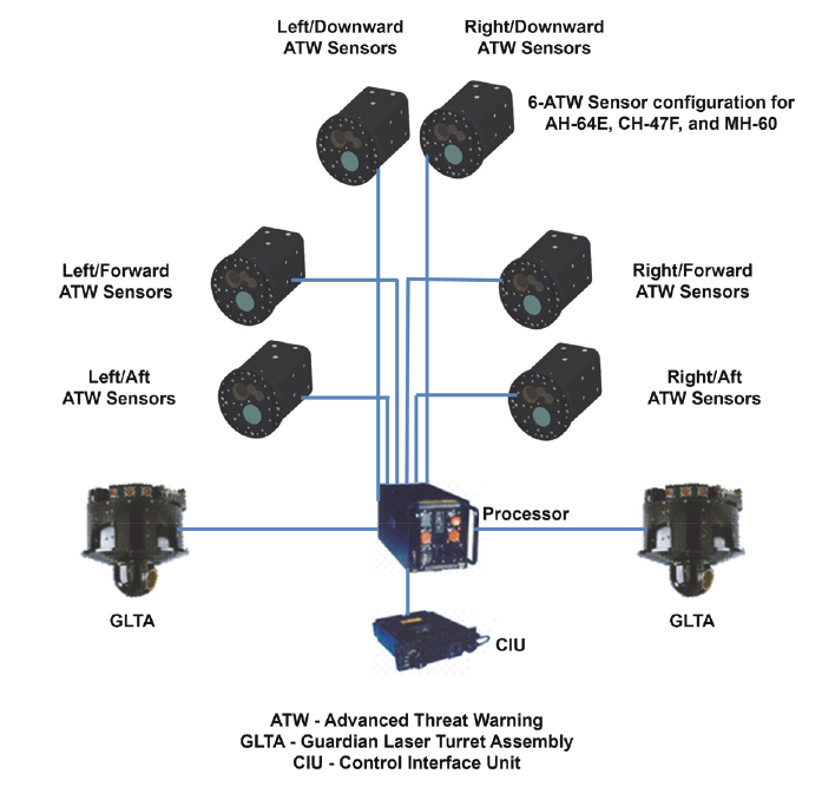
In July 2017, the Army quietly announced that AH-64E Apaches with the 4th Squadron, 6th Cavalry Regiment had become its first helicopters equipped with the LAIRCM to see actual combat. The unit having deployed to Northern Iraq to support the U.S.-led campaign against ISIS terrorists.
The Aviationist further highlighted the service’s use of the countermeasures system in the region after additional photos of the squadron’s gunships with the new equipment emerged in October 2017. The Guardian Laser Transmitter Assemblies are clearly visible on the tips of the AH-64Es’ stub wings in these images.

Other versions of the system are already in service with the U.S. Air Force, Navy and Marine Corps. The Dutch Army has also employed an earlier generation of the countermeasures on its AH-64D Apaches for nearly a decade.
The nomenclature for the various arrangements can be confusing, given that helicopters are hardly “large aircraft,” but the different versions share the same basic features as the original models the Air Force adopted. The Army’s variant is based on the so-called “Department of the Navy” (DON) AN/AAQ-24(V)25 configuration commonly found on Marine Corps’ CH-53E helicopters.
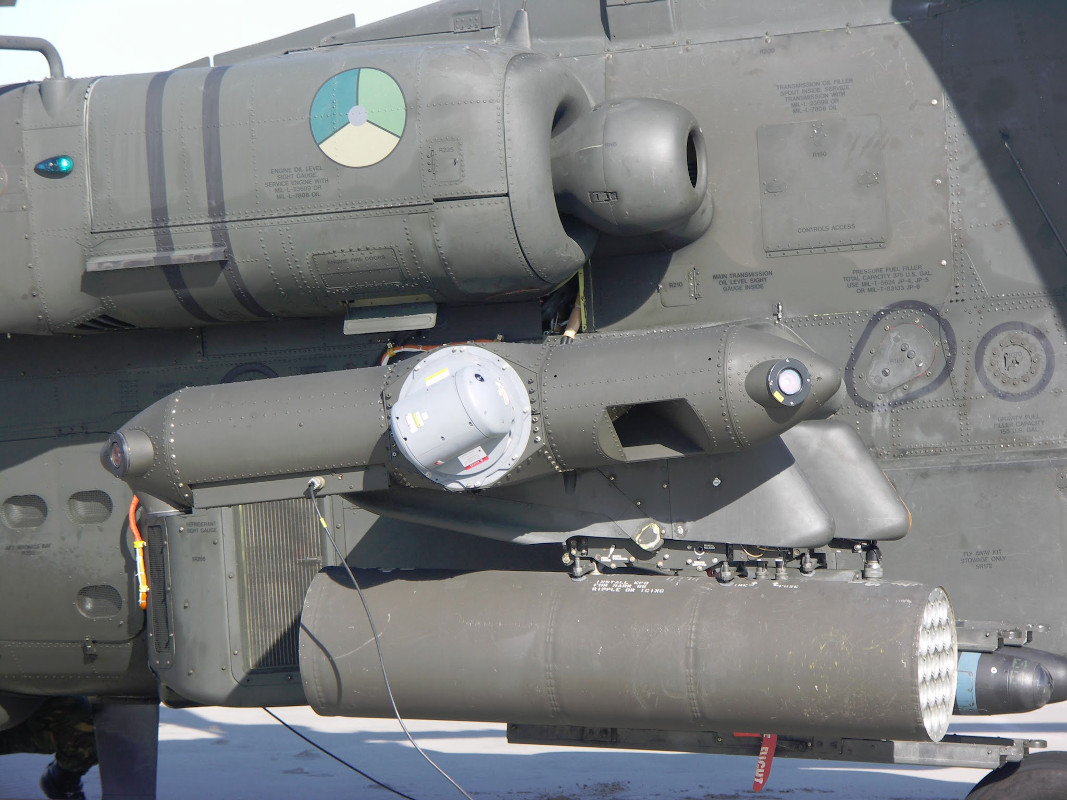
The decision to equip helicopters involved in the fight against ISIS with extra defenses makes perfect sense. These weapons are relatively easy to use and can be dangerous to both civilian and military aircraft. ISIS reportedly put together a manual for its fighters on the best tactics for employing them against coalition planes and helicopters.
Since 2012, Small Arms Survey has documented at least three different types of heat-seeking shoulder-fired, man-portable surface-to-air missiles, commonly known by the acronym MANPADS, in the hands of various terrorist and rebel groups in both Iraq and Syria. Other independent researchers have also been able to track the proliferation of these systems through propaganda photos and video and black market arms listings.

Militants say they have shot down a number of a number of Iraqi, Syrian, and Russian aircraft, though those parties often deny the claims. That being said, the Russians have steadily begun adding similar directional countermeasures, such as the President-S system, to their helicopters in Syria and are offering the equipment to countries with similar terrorist and insurgent threats.
The danger of MANPADS exists well beyond Iraq and Syria. Houthi rebels in Yemen successfully brought down an American MQ-9 Reaper in October 2017, saying they did so with a shoulder-fired missile. The weapons have been a particularly important tool for Russian-backed separatists fighting the Ukrainian government, as well.
But the Office of the Director of Operational Test and Evaluation says that the new defensive gear on the Army’s AH-64s in Iraq did not always work as intended on this initial deployment. Worryingly, the warning sensors have failed on multiple occasions, which could render the system ineffective depending on how the incoming missile approaches the helicopter.
“Northrop Grumman identified the problem and the Army put a pilot procedural workaround in place,” the office’s report said. “The potential still exists for aircrew to fly with a failed sensor since system indication of sensor failures is visual only.”
The Virginia-headquartered defense contractor found that the problem was in the software linking the sensors with the rest of the system. Unfortunately, the patch that was supposed to fix the issue also failed.
Northrop Grumman was supposed to provide another update in October 2017. However, the reporting period for the Office of the Director of Operational Test and Evaluation’s review ended in September 2017 and we don’t know if this new code has arrived or if the system is now working as advertised.
The video below shows a directional infrared countermeasure system deflecting a missile during a test.

The Army’s developments of additional versions of the system that will work with its Black Hawks and Chinooks have run into more serious hurdles. In both cases, tests exposed problems that required engineers to completely rework how they intended to mount the various components on the helicopters.
The mounts for the Guardian Laser Transmitter Assemblies on the UH-60L and M models physically broke during testing. In a combat situation, with the crew taking evasive maneuvers, one imagines that structural failure could lead to the turrets breaking away from the aircraft entirely, rendering the system useless.
Flight testing of the LAIRCM on a CH-47F Chinook, which began in July 2017, revealed that the arrangement of the six warning sensors did not provide adequate coverage around the helicopter. As with the outright sensor failures in Iraq, if these components don’t detect the incoming missile, there’s no chance for the rest of the system to counter it.
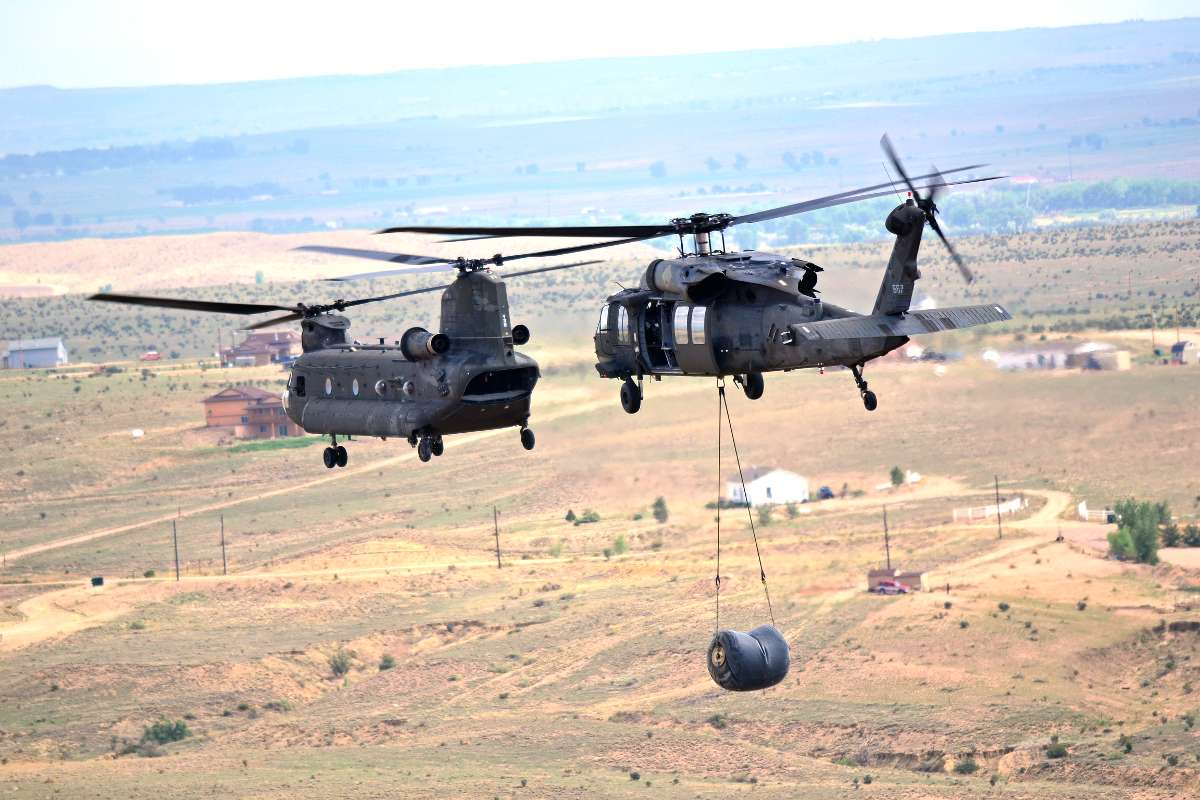
Of course, none of the issues indicate any fundamental problem with adding the LAIRCM to the Army’s helicopters. It is clearly a valuable capability to have as MANPADS continue to become a more common threat. These weapons are also steadily becoming more capable with their own means of defeating certain countermeasures, such as decoy flares, meaning that it is only more important for crews to have multiple layers of defense.
Still, the delays in fielding the equipment, which as we already noted is in service with both the Air Force and Navy already, are significant, especially since the Army has been working on this since at least 2016. The service first began the program in response to an urgent request from special operators in the Middle East, which those units had submitted to their superiors in 2015. I previously obtained heavily redacted copies of those documents via the Freedom of Information Act, which you can find here and here.
We don’t know if special operations helicopter units in the region, including elements of the Army’s elite 160th Special Operations Aviation Regiment, have already begun using other versions of the LAIRCM. If they are, though, it’s not clear why the Army has run into problems with the physical arrangement in porting the system over to the Black Hawks and Chinooks. The 160th uses specially configured MH-60 Black Hawk and MH-47 aircraft.
It’s also not clear how this has happened given the extensive knowledge base regarding the underlying system within the U.S. military. The Air Force has employed the original LAIRCM on a wide variety of aircraft, including its especially sensitive VC-25A “Air Force One” jets, for more than a decade. The Marine Corps has been flying a variety of helicopters, including its own highly modified VH-3D “Marine One” and VH-60N VIP types.
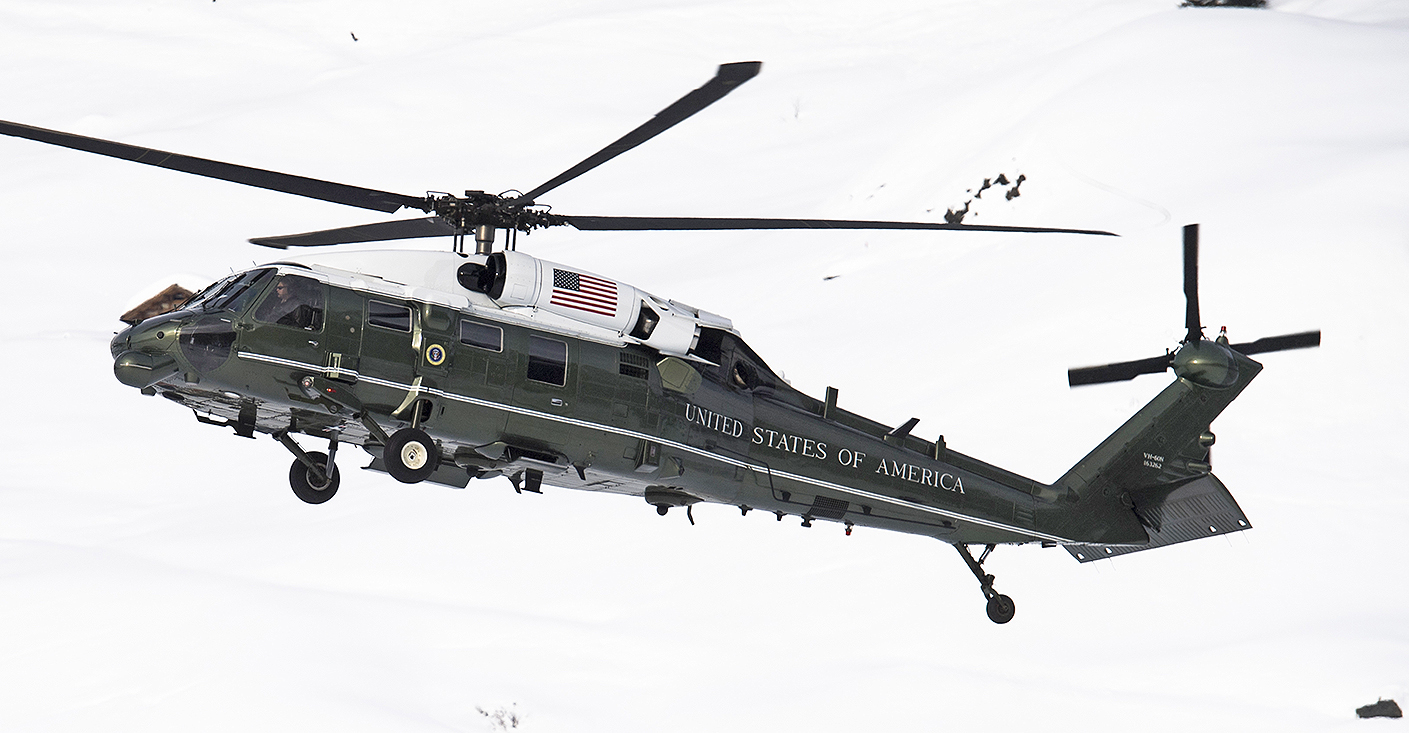
One would imagine that the VH-60N would share at least some similarities with other H-60 variants. There is no reason that the Army should not be able to at least leverage experience of integrating the system on that helicopter when developing the mounting system for its own Black Hawks.
With the danger of shoulder-fired and other lightweight infrared surface-to-air missiles only continuing to expand, the Army will want to make sure it moves to fix these issue as fast as possible in order to make sure it can field these added countermeasures sooner rather than later.
Contact the author: jtrevithickpr@gmail.com
